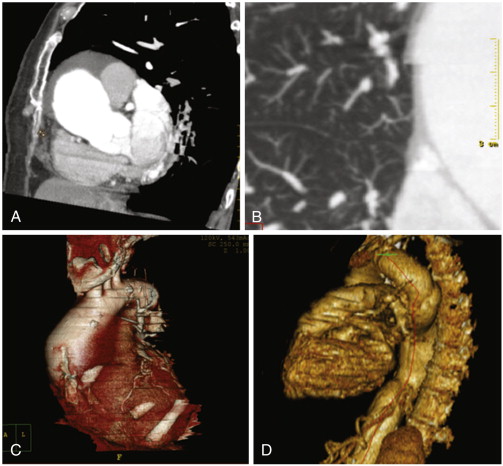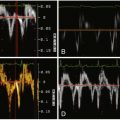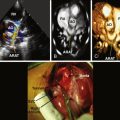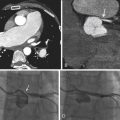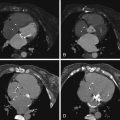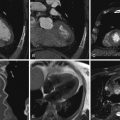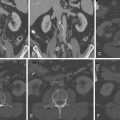Key Points
- ▪
Artifacts are so common as to be universal.
- ▪
Prevention is the best cure.
- ▪
Review the study for artifacts before reading it, so as not to be “tricked.”
- ▪
Use retrospective gating reconstructions and different phase reconstructions liberally to obviate whatever artifacts may be present.
All forms of imaging are subject to artifacts, and proficiency with artifact recognition and suppression is critical for best practice of any form of imaging, including cardiovascular CT (CVCT). In terms of diagnostic imaging, what sets the heart apart from all other organs is the rapidity of its motion. Motion of any sort remains one of the most common causes of artifacts for all modalities of cardiac imaging.
Temporal resolution is, therefore, a crucial aspect of cardiac imaging. The temporal resolution of current 64-slice cardiac CT (CCT) is 140 msec, which is sufficient to image most small cardiac structures at any given phase of the cardiac cycle ; therefore, imaging, especially CT coronary angiography, is intentionally gathered in the quiescent phase of diastole -diastasis.
Other regularly encountered causes of artifacts or suboptimal CT scan quality include suboptimal settings, inadequate electrocardiographic (ECG) gating, and high-attenuation artifacts.
Optimal examinations with great clarity are feasible.
Prevention of artifacts should be the preferred approach, because there are limited means to edit away artifacts.
Prevention of Artifact
- □
To reduce patient motion:
- •
Prepare the patient before the scan.
- •
Eliminate any communication barriers so patient can follow instructions. The services of a translator may be necessary.
- •
Prepare the patient to anticipate the warm sensation of contrast dye injection and not be alarmed by it (to attempt to avoid heart rate [HR] increase during the scan).
- •
Have the patient practice breath-holding until successful.
- •
Instruct the patient not to swallow during scanning.
- •
- •
- □
Use β-blockers to avoid HR acceleration during the scan.
- □
To avoid excessive R-R variation:
- •
Exclude patients with frank arrhythmias.
- •
Use β-blockers to suppress HR acceleration.
- •
- □
Use optimal kilovolts and milliamps.
- □
To optimize sampling during diastasis:
- •
Although use of retrospective gating increases radiation exposure, it provides more versatility and robustness in reconstructing images from different phases (e.g., 70%, 75%, and 80% phases of the cardiac cycle) to find one without motion-related artifacts.
- •
Each study should be assessed for noise level and artifacts before image interpretation is initiated because this establishes a baseline sense of image adequacy and may justify the exclusion of ectopic cardiac cycles.
Many studies will have more than one form of artifact.
Noise
With CT scanning, multiple mechanisms can affect image quality. One of these is image noise. Noise can be defined or measured as the standard deviation of Hounsfield unit voxel values within a homogeneous phantom, usually a water phantom. Usually, the lower the noise, the higher the signal-to-noise ratio (SNR), and the better the image quality is. A number of factors affect the amount of noise, including technical parameters, patient factors, and image reconstruction and post-processing. Technical parameters of kilovoltage potential (KvP), milliamps, and exposure time influence the amount of noise within the image. Patient size—for example, morbid obesity—can attenuate the number of x-ray photons reaching the detector and increase the amount of noise, therefore often requiring an increase to the standard parameters of kVp and mA. Noise also can be modulated after image acquisition by altering the reconstruction kernel, with sharper kernels generating noisier images, as well as by increasing the slice thickness, which generally increases the SNR of an image ( Fig. 5-1 ).
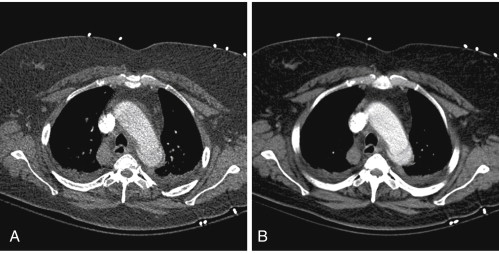
Causes of Prominent Noise
- □
Large patient
- □
Increased kilovolts
- □
Thin slices
- □
Random fluctuations in x-ray numbers being detected, and electric noise in the system (noise is not affected by pitch)
Noise Banding
- □
Appearance: wormy look
- □
ECG triggering problem—ECG noise or sensing problem
Types of Artifacts
Slab or Band Artifacts ( Figs. 5-2 and 5-3 )
- □
Appearance : equal-sized slabs with different brightness (HU) due to different contrast concentration or with different SNR. Image acquisition for coronary CTA deliberately washes out the contrast from the right heart; this occurs during acquisition and is essentially a normal effect of the saline chaser.
- □
Slab artifacts may be seen in three-dimensional virtual reality (3DVR) images or sagittal images.
- □
Causes :
- •
Commonly, a normal byproduct of prospective acquisition
- •
Incorrect use of contrast
- •
Excessive contrast present
- •
Injection too early
- •
- •
Possible solution: Avoid excessive contrast effect
- •
- □
Solution: Seldom affects image quality, virtually a normal finding as dye washes through the right heart
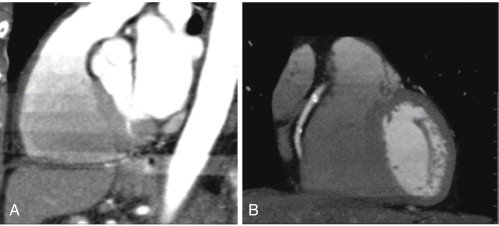

Stair-Step Artifacts ( Fig. 5-4 )
- □
Appearance : 10- to 12-mm high vertical steps (along the Z-plane; therefore best seen in sagittal and coronal images); anatomic structures of one plane are offset with respect to the next plane.
- □
Stair-step artifacts usually occur on the heart.
- □
Stair-step artifacts also may occur on adjacent structures.
- □
Problem : Review of axial images may lead to the impression of a pseudostenosis at the level of the step; therefore, the presence of a step must be recognized.
- □
Cause : motion of either the heart or the patient
- •
Cardiac motion. Steps may be single (e.g., due to a single ventricular ectopic beat) or multiple. Causes of step artifacts as a result of nondiastolic phase acquisition include:
- •
Irregular heart rhythm of any cause
- •
Irregular heart rate
- •
Inadequate ECG signal
- •
Incorrect reconstruction parameters
- •
- •
Non-cardiac motion (e.g., respiration, swallowing, limb motion). Steps due to non-cardiac motion generally are apparent across intrathoracic structures. Step artifacts due to patient motion also may be present in reformatted maximum intensity projection and multiplanar reconstruction images.
- •
To establish that nonrespiratory motion is responsible for the step, one must confirm that:
- •
A double dome of diaphragm is present.
- •
Block artifacts are present over the diaphragm.
- •
The stair-step is present over the sternum but not over the spine on sagittal view.
- •
Motion blurring due to breathing can be identified by reviewing lung windows that demonstrate blurriness of the lung parenchyma.
- •
- •
- •
- □
Possible solutions:
- •
There is little to do for the affected study.
- •
If steps are limited to the heart and the heart rate had accelerated excessively, β-blockers would help.
- •
A retrospectively acquired study may allow a piecemeal approach to coronary artery reconstruction, with different segments of a vessel being reconstructed at different phases, ultimately allowing for incremental but near-complete evaluation of a coronary artery.
- •

